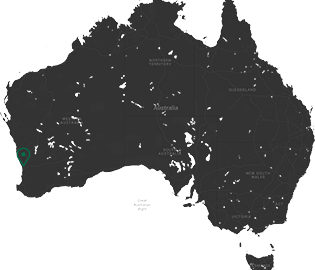1. Prime your position
2. Gunning for growth
3. Sniff out a good deal
4. Keep cool for less
5. Economic wrap
Dear Valued Clients,
We’re coming to the end of 2011, and a new year is just over the horizon, bringing with it a range of new opportunities and prospects.
If you’ve been thinking about making a property purchase, 2012 may well be a good time to proceed. With interest rates having now fallen back to their long term average and the prospect of further rate cuts in the New Year very real, borrowing costs are without a doubt looking less onerous.
Moreover, in the current “buyer’s market”, there is plenty of room to negotiate for purchasers who are in the know.
Of course, if you do intend to buy a property in 2012, you’ve got to start planning right now – and that means ensuring you’re in a position to secure the necessary finance.
In this issue of Mortgage News, we look at how buyers can proactively improve the way they will be viewed by lenders.
With capital growth prospects having decreased in many corners of the property market over the past 12 months, we also look at how investors can successfully locate those markets where the opportunities for growth are still strong.
In addition, we also provide important insights to help home buyers and investors track down the best deals in the market.
If you’d like to discuss any aspect of your property purchasing strategy, or if you’d simply like to assess your current or potential home financing situation, please give me a call.
Yours Sincerely,
Galvin Dawson
Finance Edge Australia Pty Ltd

If your goal is to buy a property in the New Year, be it an investment property or a new home, you should begin preparing now.
The key to a successful purchase is, of course, finance so you’ve got to be pro-active in how you plan to appeal to lenders.
There is a whole range of factors that lenders consider when it comes to assessing your loan eligibility, and by thinking about these early on you’ll be best placed to strike when the right property comes along.
Lenders’ policies certainly vary, but there are several common factors they will all consider in terms of determining your creditworthiness and approving you for a loan.
The first thing they will look at is your capacity to service a loan – i.e. your income stream. A stable employment and strong employment history are the key elements here, so don’t think about changing jobs any time soon if a property purchase is your top priority.
Your broader financial position and history will also be a key consideration for lenders.
This is where the timely payment of bills and debts is crucial. Ensure you minimise any personal debts such as credit cards and avoid absolutely missing payment deadlines or defaulting.
With Christmas now just weeks away, avoiding debt and keeping on top of bills might sound impossible, but don’t let the silly season stand in the way of your larger financial goals.
Keeping afloat over Christmas is quite possible if you plan your spending wisely. Draw up a budget and determine exactly how much cash you have to play with, then allocate it to gifts, food and travel accordingly.
Christmas needn’t be a lavish affair either – think of ways to show your loved ones how much you care without breaking the bank. And there are plenty of ways to celebrate without spending a fortune, but you’ve got to be smart – and strong-willed.
If you’re thinking about buying a home or investment property soon, come in and see us. We can help you prepare your finances to ensure you get that all important property purchase over the line.

While the property market has changed greatly in the last year, there are still opportunities for growth if you know what to hunt for.
The fast-paced capital growth enjoyed across Australia for many years by property owners has slowed dramatically in the past 12 months. Current predictions are that prices will track sideways across many of the markets for some time.
There are, however, still opportunities to achieve capital growth, but it’s a matter of buying smartly – and buying smartly means you need to understand what pushes prices upwards.
Put simply, property prices tend to rise in locations experiencing growth across a range of areas and the best returns are usually found in these markets that are poised for growth.
Employment is a major indicator of price growth as a strong job market drives population growth, which in turn fuels demand for real estate.
Of course, no city or town will do well without quality infrastructure. Strong investment in infrastructure or high quality infrastructure already present is usually a good indicator of potential investment opportunities.
Suburbs earmarked for urban renewal should also be on your radar. With demand for inner-city living growing exponentially, many suburbs in capital cities, which may once have been undesirable, are now locations of significant redevelopment, thanks to their prime position. Such a transformation can have a huge impact on real estate prices.
A state or local government’s policies and plans can also be a strong influence on an area’s growth prospects. Keep an eye out for any announcements concerning development and plans for growth.
Also keep in mind that one of the biggest drivers of property demand is a growing population and areas experiencing an increase in residents will often see real estate prices rise.
Finally, remember that property is a long-term investment. So long as you do your research and buy well, your property will grow in value – you’ve just got to be patient and give it time.
![]()
- Target locations with strong infrastructure investment and quality amenities that will bring long-term benefits to the area
- Monitor announcements made by local councils and governments and visit them to find out their intentions for growth in the area
- Seek out well-located suburbs which haven’t yet experienced a renaissance but that adjoin one or two that have
- Look for locations with several strong industries rather than any dependent on a single industry

If you’re in the market for a property purchase, it’s time to place – and keep – your finger on the real estate pulse.
Only by knowing the property market inside out can investors scope out good buys and off-market deals.
First things first: you’ve got to know your stuff. This means immersing yourself in real estate magazines, newspapers and any other sources of property data, trends and commentary. Being well informed means you’ll be aware of market conditions as well as buying/selling trends.
You’ve also got to hit the pavement and visit as many properties as you can. Only then will you be able to make informed assessments of a property’s true worth and understand what you should be able to get for your dollar. By knowing the local market intimately, you’ll also be well placed to spot an opportunity as soon as you see it – and have the confidence to strike.
Building relationships with real estate agents is also key to securing a good deal. If agents know you, know what you want and believe you are a genuine buyer, then you will be the one they call the minute a new listing comes up.
![]()
While a real estate agent’s top priority will always be their client, the vendor, agents are also your key to securing a good buy. From being the first to hear about new listings to access to off-market deals, good relations with several real estate agents will maximise your chance of landing the property you are looking for.
Foster a good relationship with agents by demonstrating that you’re a serious buyer. This means knowing what you’re looking for and arming yourself with a pre-approval for finance so you can show you’re ready to act when the opportunity arises.
If you need someone to help you gain pre-approval, contact us today and we’ll be able to help.

With the weather now warming up and several long months of heat ahead, it’s time to start thinking about how to keep cool.
Air conditioning is, of course, the easiest way to survive the warmer months, but it’s also the best way to score one very expensive energy bill – and it’s certainly not good for the environment.
If you haven’t already done so, think seriously about installing insulation in your property. While it may be a significant investment, insulation can make a world of difference to the temperature while also working to reduce your power costs.
Another advisable investment is creating shade around the hottest parts of your home. Pergolas with shade cloths or vines are a great way to prevent heat from seeping through windows, as are trees. Deciduous trees and vines are best as they create shade in summer but also let sunlight through in winter.
There is also a raft of smaller measures that can help you survive the warmer months. For a cool home that doesn’t come with a side of debt, follow our cool tips this summer.
![]()
- Close blinds to keep the sun’s rays out, especially on windows facing north. If you don’t already have blinds, get some! They can make a huge difference both to heating and cooling.
- Use a fan first. It may also be worthwhile investing in portable fans and/or ceiling fans. They use just a fraction of the electricity required by air conditioners.
- In the evenings when the temperature drops, open the house up to any cool breezes. Installing lockable screen doors can be a good investment to enable you to do this at ease.
- When using your air conditioning set the thermostat to 26 degrees – the optimum setting according to Environment Victoria. Just one degree cooler could increase your cooling costs by 15 per cent.
- Finally, just cool the rooms you’re using and shut off and avoid rooms which are susceptible to heat.

The Reserve Bank of Australia (RBA) has shown some Christmas spirit, with a second consecutive cash rate cut coming just in time for the festive season.
The RBA cut the official cash rate on 6 December by 0.25 per cent, bringing the official rate down to 4.25 per cent.
The central bank shocked the nation in November, when it reduced the cash rate from 4.75 per cent to 4.5 per cent on Melbourne Cup Day – the first reduction in more than two and a half years and a stark contrast to 2010’s Melbourne Cup Day rate rise upset.
Benign inflationary growth, slow employment growth and poor consumer confidence all contributed to the November rate cut and with similar conditions persisting into December, many economists were not surprised that the RBA moved downward once again.
“The rate cut should not come as a surprise from a housing market perspective, considering that the soft market conditions that first became evident in June of last year have created no inflationary pressures and have persisted,” commented RP Data’s Cameron Kusher.
“In fact, capital city home values are down four per cent from their December 2010 peak and rental rates have increased by just 4.6 per cent over the 12 months to September 2011.”
“In addition to flagging the soft property market conditions, the RBA noted in its monetary policy statement that growth in the global economy has moderated in 2011.”
Disclaimer. This newsletter does not necessarily reflect the opinion of the publisher. It is intended to provide general news and information only. While every care has been taken to ensure the accuracy of the information it contains, neither the publishers, authors nor their employees, can be held liable for any inaccuracies, errors or omission. Copyright is reserved throughout. No part of this publication can be reproduced or reprinted without the express permission of the publisher. All information is current as at publication release and the publishers take no responsibility for any factors that may change thereafter. Readers are advised to contact their financial adviser, broker or accountant before making any investment decisions and should not rely on this newsletter as a substitute for professional advice.























